| This might include waste from butcher shops or processing plants that process fruits and vegetables.
Dehydrated paunch products (ingested food and water) are composed of the contents of the rumen of slaughtered cattle, dehydrated at temperatures over 212?F. (100?C.) to a moisture content of 12 percent or less. Such dehydration is designed to destroy any pathogenic bacteria.
Dried poultry waste is an animal waste product composed primarily of processed ruminant excreta that has been artificially dehydrated to a moisture content not in excess of 15 percent. |
| Grains mixed with fruits and vegetables can be served at the next meal. In her book, Keep Your Pet Healthy the Natural Way, Lazarus recommends, "The only harmonious foods to be used with meats or even dairy proteins are vegetables (raw and grated or cut up)."2
However, my own personal experience over the last twelve years of cooking for my animal companions is that I have always fed prorein, carbohydrates, and fruits or vegetables together. This has never caused any problem with any of my animals. My cats absolutely refuse to eat strictly grains mixed with fruit or vegetables at a meal. |
Herbert Ross, DC with Keri Brenner, L.Ac.
See book keywords and concepts |
 One thing alternative and conventional medicine agree on is that Americans should consume far less animal protein, fat (especially bad fats), and processed foods, and eat more complex carbohydrates, especially whole grains rich in fiber, and at least five servings daily of fruits and vegetables. Buck Levin, Ph.D., RD, a specialist in environmental nutrition, offers a simple prescription for a healthy diet—one of natural, whole foods: "By whole foods we mean consuming a diet that is high in foods as whole as possible, with the least amount of processing, additives, and sweeteners. One thing alternative and conventional medicine agree on is that Americans should consume far less animal protein, fat (especially bad fats), and processed foods, and eat more complex carbohydrates, especially whole grains rich in fiber, and at least five servings daily of fruits and vegetables. Buck Levin, Ph.D., RD, a specialist in environmental nutrition, offers a simple prescription for a healthy diet—one of natural, whole foods: "By whole foods we mean consuming a diet that is high in foods as whole as possible, with the least amount of processing, additives, and sweeteners. |
Elaine Magee
See book keywords and concepts |
 This includes too few fruits and vegetables and too many fried foods, meats, and salty foods," he explains. In this chapter, we'll cover what you need to know to harness the power of food synergy to fight high cholesterol, high blood pressure (also a leading risk factor for stroke), and diabetes.
The Six Steps to a Heart Attack
Step 1. Cells that line the walls of the coronary artery are damaged. These endothelial cells can be injured by debris (such as cholesterol), by a type of white blood cell that engulfs foreign matter, or from low or turbulent bloodflow in the arteries. This includes too few fruits and vegetables and too many fried foods, meats, and salty foods," he explains. In this chapter, we'll cover what you need to know to harness the power of food synergy to fight high cholesterol, high blood pressure (also a leading risk factor for stroke), and diabetes.
The Six Steps to a Heart Attack
Step 1. Cells that line the walls of the coronary artery are damaged. These endothelial cells can be injured by debris (such as cholesterol), by a type of white blood cell that engulfs foreign matter, or from low or turbulent bloodflow in the arteries. |
Bottom Line Health
See book keywords and concepts |
| In addition to eating plenty of fruits and vegetables, add unprocessed wheat bran to soups, stews and salads.. .or take a fiber tablet. Be sure to drink eight to 10 glasses of water daily—otherwise, fiber can be constipating.
Natural approach: Vitamin C (500 to 1,000 mg daily) helps strengthen capillaries, including those in the rectum. Acidophilus (one to three capsules before each meal) aids bowel regularity.
Also helpful: Apply vitamin E oil or cream to hemorrhoids to ease any discomfort and promote healing. |
Ray D. Strand
See book keywords and concepts |
 Our food, especially fruits and vegetables, used to provide all the extra antioxidants our bodies needed. A generation or two ago, people ate more whole, fresh foods that contain significantly more antioxidants than today's diet does. But as a result of the tremendous increase in the toxins in our environment today, along with the depleted nutrients we receive from our highly processed foods, our scale is out of balance—in favor of the silver coins (free radicals).
We need to add nutritional supplements to the balance in order to provide the level of antioxidants our bodies need. Our food, especially fruits and vegetables, used to provide all the extra antioxidants our bodies needed. A generation or two ago, people ate more whole, fresh foods that contain significantly more antioxidants than today's diet does. But as a result of the tremendous increase in the toxins in our environment today, along with the depleted nutrients we receive from our highly processed foods, our scale is out of balance—in favor of the silver coins (free radicals).
We need to add nutritional supplements to the balance in order to provide the level of antioxidants our bodies need. |
Marshall Editions
See book keywords and concepts |
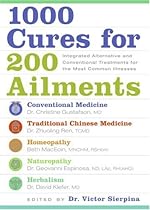 NATUROPATHY
Diet: Eat a wholesome diet based on whole grains and fresh fruits and vegetables. Consume as many orange, yellow, and green leafy vegetables as possible. These contain pigments called carotenoids that are essential for optimum eye health. Fruits such as blueberries and dark cherries contain anthocyanidin, a chemical that is also important for good eye health. Vitamin C is also found in these foods, which is helpful for building up the structures around the eye. Avoid any foods that can cause or contain free radicals. NATUROPATHY
Diet: Eat a wholesome diet based on whole grains and fresh fruits and vegetables. Consume as many orange, yellow, and green leafy vegetables as possible. These contain pigments called carotenoids that are essential for optimum eye health. Fruits such as blueberries and dark cherries contain anthocyanidin, a chemical that is also important for good eye health. Vitamin C is also found in these foods, which is helpful for building up the structures around the eye. Avoid any foods that can cause or contain free radicals. |
Ray D. Strand
See book keywords and concepts |
 Merely by consuming five to seven servings of fruits and vegetables daily, we can decrease the risk of almost every type of cancer by half.1'1
The absolute best defense your body has is a good diet. Nothing a doctor can prescribe will take the place of the diet your body needs to fuel and replenish itself. One of the principles you will hear me stress over and over is the fact that if you choose to use nutritional supplements, you must supplement a good diet, not a bad one. Merely by consuming five to seven servings of fruits and vegetables daily, we can decrease the risk of almost every type of cancer by half.1'1
The absolute best defense your body has is a good diet. Nothing a doctor can prescribe will take the place of the diet your body needs to fuel and replenish itself. One of the principles you will hear me stress over and over is the fact that if you choose to use nutritional supplements, you must supplement a good diet, not a bad one. |
Dr. Steve Blake
See book keywords and concepts |
 Less than 10 percent of salt intake is from the salt in unprocessed foods such as fruits and vegetables. Three-quarters of the salt most people eat is hidden in processed foods. Many processed foods have a high sodium content without tasting salty. About 10 percent of normal salt intake is from salt added in the kitchen or at the table.
Three-quarters of the salt most people eat is hidden in processed foods.
Most natural foods start out with an abundance of potassium and very little sodium. During food processing, this balance gets reversed. Less than 10 percent of salt intake is from the salt in unprocessed foods such as fruits and vegetables. Three-quarters of the salt most people eat is hidden in processed foods. Many processed foods have a high sodium content without tasting salty. About 10 percent of normal salt intake is from salt added in the kitchen or at the table.
Three-quarters of the salt most people eat is hidden in processed foods.
Most natural foods start out with an abundance of potassium and very little sodium. During food processing, this balance gets reversed. |
Dr. Steven R. Gundry
See book keywords and concepts |
 The only other things you'll need are some simple food lists, a few measuring tips, and-oh, yes-a bathroom scale, preferably one with a
Why MoAt DietA Fail
IS ill 1 ill I
Hundreds of books extol the benefits of fruits and vegetables, exercise, and myriad diets. I'll wager a guess that you've regularly tried new programs, whether low-fat, high-fat, low-calorie, high-carb—you name it, it's out there. Ditto with fitness programs: aerobics, strength training, yada, yada. The only other things you'll need are some simple food lists, a few measuring tips, and-oh, yes-a bathroom scale, preferably one with a
Why MoAt DietA Fail
IS ill 1 ill I
Hundreds of books extol the benefits of fruits and vegetables, exercise, and myriad diets. I'll wager a guess that you've regularly tried new programs, whether low-fat, high-fat, low-calorie, high-carb—you name it, it's out there. Ditto with fitness programs: aerobics, strength training, yada, yada. |
Bottom Line Health
See book keywords and concepts |
| To restore these minerals, eat an adrenal-supportive diet that is rich in bright-colored fruits and vegetables, legumes, lean meats and whole grains. Avoid sugar and other refined carbohydrates.
Recommended: Sea vegetables, such as nori, arame, wakame and hijiki. These are especially high in key minerals. Health-food stores sell these vegetables in dried form. They can be crumbled into soup, salad and vegetables.
•Get the right kind of fat. |
| Nor did it look at other nutritional factors, such as the consumption of fiber, fruits and vegetables, etc.
But more and more oncologists are convinced that future studies will continue to demonstrate that good nutrition can help guard against most types of malignancies.
A CANCER-PROTECTION PLAN
Diana Dyer, a registered dietitian and three-time cancer survivor, has reviewed the latest studies and interviewed top researchers to create an anticancer nutrition plan. |
Tom Bohager
See book keywords and concepts |
 Freshly juiced fruits and vegetables would be a great choice during times of illness. Fasting, eating raw foods, and restricting calories can also promote healing, increasing metabolic energy by reducing the demand for digestive energy. (Please note that the recommendations in this book are in no way intended to replace recommendations or advice from physicians or other health care providers. They are intended to support your path to optimal health. If you suspect you have a medical problem, I urge you to seek medical attention from a competent health care provider. Freshly juiced fruits and vegetables would be a great choice during times of illness. Fasting, eating raw foods, and restricting calories can also promote healing, increasing metabolic energy by reducing the demand for digestive energy. (Please note that the recommendations in this book are in no way intended to replace recommendations or advice from physicians or other health care providers. They are intended to support your path to optimal health. If you suspect you have a medical problem, I urge you to seek medical attention from a competent health care provider. |
Bottom Line Health
See book keywords and concepts |
| A diet that is low in saturated fats (10% or less of total calories) and high in fruits and vegetables (at least nine daily servings) and whole grains can often lower cholesterol as much as a moderately powerful statin. Regular exercise also helps. Walking 45 minutes per day reduces cardiac mortality by 50%. And if you do go on medication, a healthy diet and regular exercise will enable you to use a lower dosage.
To ensure that you're being prescribed the appropriate amount of medication, ask your doctor what percentage of LDL cholesterol reduction you need. |
Marshall Editions
See book keywords and concepts |
 Eat fresh fruits and vegetables, whole grains, legumes, and quality protein such as fish, lean chicken, and beans every day Eat plenty of green leafy vegetables for their high nutrient content, which will provide a base of nutrients required for a healthy immune system. Avoid foods that weaken your immune system, including processed foods that contain sugar and hydrogenated vegetable oils, store-bought baked goods, and all beverages other than tea, water, and freshly squeezed juices. Eat fresh fruits and vegetables, whole grains, legumes, and quality protein such as fish, lean chicken, and beans every day Eat plenty of green leafy vegetables for their high nutrient content, which will provide a base of nutrients required for a healthy immune system. Avoid foods that weaken your immune system, including processed foods that contain sugar and hydrogenated vegetable oils, store-bought baked goods, and all beverages other than tea, water, and freshly squeezed juices. |
Steven V. Joyal
See book keywords and concepts |
 If, however, the body is under stress, which can be caused by a failure to follow a diet that contains sufficient amounts of antioxidants (in other words, lots of fresh fruits and vegetables), the body may not be capable of neutralizing these damaging molecules. Exposure to environmental toxins (pollution, food additives, radiation, pesticides, and cigarette smoke, for example) stimulates the production of free radicals. If the body is unable to neutralize free radicals, the end result may be damage to the body's cells, tissues, and organs. If, however, the body is under stress, which can be caused by a failure to follow a diet that contains sufficient amounts of antioxidants (in other words, lots of fresh fruits and vegetables), the body may not be capable of neutralizing these damaging molecules. Exposure to environmental toxins (pollution, food additives, radiation, pesticides, and cigarette smoke, for example) stimulates the production of free radicals. If the body is unable to neutralize free radicals, the end result may be damage to the body's cells, tissues, and organs. |
Amarjit S. Basra
See book keywords and concepts |
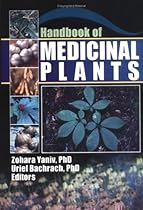 This leads to the recommendation of a diet high in fruits and vegetables, in other words, plant food with a large proportion of antioxidant vitamins, flavonoids, and polyphenols. As an example, the observation that in the Mediterranean area there is a lower incidence of CHD and certain types of cancers indicates that the Mediterranean diet, rich in grains, legumes, fresh fruits and vegetables, wine in moderate amounts, and olive oil, has beneficial effects on human health, notwithstanding the presence of traditional risk factors for coronary heart disease (e.g. This leads to the recommendation of a diet high in fruits and vegetables, in other words, plant food with a large proportion of antioxidant vitamins, flavonoids, and polyphenols. As an example, the observation that in the Mediterranean area there is a lower incidence of CHD and certain types of cancers indicates that the Mediterranean diet, rich in grains, legumes, fresh fruits and vegetables, wine in moderate amounts, and olive oil, has beneficial effects on human health, notwithstanding the presence of traditional risk factors for coronary heart disease (e.g. |
Mike Adams, the Health Ranger
See article keywords and concepts |
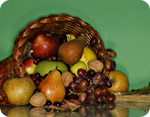 Are Americans Eating Enough fruits and vegetables?
An excellent source of information on fruit, vegetable and grain intake of Americans is USDA's 1994/96 Continuing Survey of Food Intakes by Individuals conducted by the Food Surveys Research Group, Beltsville Human Nutrition Research Center. The following information comes from that survey.
About Vegetable Intake
On average, Americans consume 3.3 servings of vegetables a day. However, dark green vegetables and deep yellow vegetables each represent only 0.2 daily servings. Are Americans Eating Enough fruits and vegetables?
An excellent source of information on fruit, vegetable and grain intake of Americans is USDA's 1994/96 Continuing Survey of Food Intakes by Individuals conducted by the Food Surveys Research Group, Beltsville Human Nutrition Research Center. The following information comes from that survey.
About Vegetable Intake
On average, Americans consume 3.3 servings of vegetables a day. However, dark green vegetables and deep yellow vegetables each represent only 0.2 daily servings. |
| Each increment of three daily servings of fruits and vegetables equated to a 22% decrease in risk of stroke, including transient ischemic attack (Gillman et al. Journal of the American Medical Association. 1995;273;1113).
Elderly men whose intake of dark green and deep yellow vegetable put them in the highest quartile for consumption of these vegetables had about a 46% decrease in risk of heart disease relative to men who ranked in the lowest quartile. Men in the highest quintile had about a 70% lower risk of cancer than did their counterparts in the lowest quintile. |
| The carotenoids most commonly found in vegetables (and in plasma) are listed below along with common sources of these compounds. fruits and vegetables that are high in carotenoids appear to protect humans against certain cancers, heart disease and age related macular degeneration. |
| Some of the common classes of phytonutrients include:
Carotenoids
Flavonoids (Polyphenols) including Isoflavones (Phytoestrogens)
Inositol Phosphates (Phytates)
Lignans (Phytoestrogens)
Isothiocyanates and Indoles
Phenols and Cyclic Compounds
Saponins
Sulfides and Thiols
Terpenes
About Carotenoids
Of all the phytonutrients, we probably know the most about carotenoids, the red, orange and yellow pigments in fruits and vegetables. The carotenoids most commonly found in vegetables (and in plasma) are listed below along with common sources of these compounds. |
| Information from the USDA (reprinted)
Editor's note: Please understand that no official body in medicine or nutrition -- not even the USDA -- currently recognizes any difference whatsoever between cooked vs. raw fruits and vegetables. This incredible oversight will, in time, prove to be a monumental mistake in the understanding of nutrition. The USDA believes that dead, cooked spinach has precisely the same nutritional value as raw, fresh spinach (and most of modern medicine agrees!). In time, the vast nutritional differences between cooked and raw foods will become mainstream science. |
Mike Adams, the Health Ranger
See article keywords and concepts |
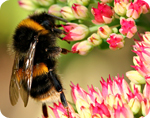 Unless something is done to protect the honeybee population soon, many fruits and vegetables may disappear from the food chain.
The results of a limited study at Landau University have been reported in newspapers around the world, stating that radiation coming from cell phones may be directly responsible for the disappearance of bee populations around the globe.
However, according to the researchers of the German study its results were based on cordless phones, which work on a different type of radiation than cell phones. Unless something is done to protect the honeybee population soon, many fruits and vegetables may disappear from the food chain.
The results of a limited study at Landau University have been reported in newspapers around the world, stating that radiation coming from cell phones may be directly responsible for the disappearance of bee populations around the globe.
However, according to the researchers of the German study its results were based on cordless phones, which work on a different type of radiation than cell phones. |
Bottom Line Health
See book keywords and concepts |
| Also, because the women ate less fat, they may have been eating more fruits and vegetables, which contain anticancer nutrients.
What it means: Women who have been treated for breast cancer do not necessarily need a low-fat diet, but they should be thoughtful about what they eat and maintain a healthy weight.
Study Supports Surgery for Metastatic Breast Cancer
Elisabetta Rapiti, MD, MPH, senior researcher, Geneva Cancer Registry, University of Geneva, Switzerland.
Lori J. |
Donna Jackson Nakazawa
See book keywords and concepts |
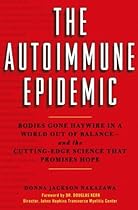 While a few well-known organochlorine insecticides that are notoriously injurious to animals—DDT, for example—have been banned in the United States, even these persist for decades in the soil in which our fruits and vegetables are grown and in our water, meanwhile accumulating up the food chain (which is why traces of DDT can be found in the steaks Becky has yet to cook for dinner). While a few well-known organochlorine insecticides that are notoriously injurious to animals—DDT, for example—have been banned in the United States, even these persist for decades in the soil in which our fruits and vegetables are grown and in our water, meanwhile accumulating up the food chain (which is why traces of DDT can be found in the steaks Becky has yet to cook for dinner). |
Jack Challem
See book keywords and concepts |
 You'll find fruits and vegetables, meats, eggs, seafood, dairy products, and deli items along the walls. (In contrast, the center aisles are home to most junk foods.) Still, there are perils on the perimeter, so you must always take the time to read food labels. For example, yogurt has evolved from a healthy product to essentially a sugary dessert, and you have to look hard to find unsweetened yogurt.
Look up and down. Product placement within any particular category, be it cereal or detergent, is often determined by slotting fees, a legal form of supermarket bribes. You'll find fruits and vegetables, meats, eggs, seafood, dairy products, and deli items along the walls. (In contrast, the center aisles are home to most junk foods.) Still, there are perils on the perimeter, so you must always take the time to read food labels. For example, yogurt has evolved from a healthy product to essentially a sugary dessert, and you have to look hard to find unsweetened yogurt.
Look up and down. Product placement within any particular category, be it cereal or detergent, is often determined by slotting fees, a legal form of supermarket bribes. |
Craig Pepin-Donat
See book keywords and concepts |
 Fit for Life focuses on food combining with an emphasis on living foods such as raw fruits and vegetables.
Other diets that use a cultural hook include: The Mediterranean Diet, Japanese Women Don't Get Fat and French Women Don't Get Fat. Desperate dieters still follow the Cabbage Soup Diet or the Grapefruit Diet. Others join Weight Watchers, Nutrisystem® and Jenny Craig®, each of which tries to convince you that you need their food menus to succeed. Slimfast would have you believe that replacing meals with shakes is the answer.
These diets have two things in common. Fit for Life focuses on food combining with an emphasis on living foods such as raw fruits and vegetables.
Other diets that use a cultural hook include: The Mediterranean Diet, Japanese Women Don't Get Fat and French Women Don't Get Fat. Desperate dieters still follow the Cabbage Soup Diet or the Grapefruit Diet. Others join Weight Watchers, Nutrisystem® and Jenny Craig®, each of which tries to convince you that you need their food menus to succeed. Slimfast would have you believe that replacing meals with shakes is the answer.
These diets have two things in common. |
| Fruits and vegetables are doused with fertilizers, pesticides and herbicides. Thousands of chemicals are routinely added to canned and processed foods to improve taste and extend shelf life. Livestock are regularly injected with growth hormones to increase salable flesh yields and massive amounts of antibiotics to stave off diseases before slaughter and eventual serving on our dinner tables.
Sadly, shockingly, our toxic exposure doesn't end there. |
Donna Jackson Nakazawa
See book keywords and concepts |
 Antioxidants are most easily available in the fruits and vegetables we eat. Blue-green algae (available at most health-food stores) contains omega fatty acids and the antioxidant phycocyanin and works similarly to a nonsteroidal anti-inflammatory drug like ibuprofen. Cranberries, blueberries, cherries, and blackberries are jam-packed with antioxidants called anthocyanins and polyphenols, which also have anti-inflammatory qualities. Leafy greens such as kale and spinach contain lutein, another superantioxidant. Antioxidants are most easily available in the fruits and vegetables we eat. Blue-green algae (available at most health-food stores) contains omega fatty acids and the antioxidant phycocyanin and works similarly to a nonsteroidal anti-inflammatory drug like ibuprofen. Cranberries, blueberries, cherries, and blackberries are jam-packed with antioxidants called anthocyanins and polyphenols, which also have anti-inflammatory qualities. Leafy greens such as kale and spinach contain lutein, another superantioxidant. |
| Remember to also wash all fruits and vegetables well—even organic ones—before you eat them. According to new data from the Centers for Disease Control and Prevention, produce accounts for 12 percent of all food-borne illnesses—a number that has been on the rise of late. Illnesses from leafy greens such as spinach and lettuce have been particularly worrisome: between 1996 and 2006, there were twenty-four such outbreaks, according to FDA records. Unlike the meat, egg, milk, and processed-food industries, the fresh produce industry is not regulated or monitored for safety by government agencies. |












